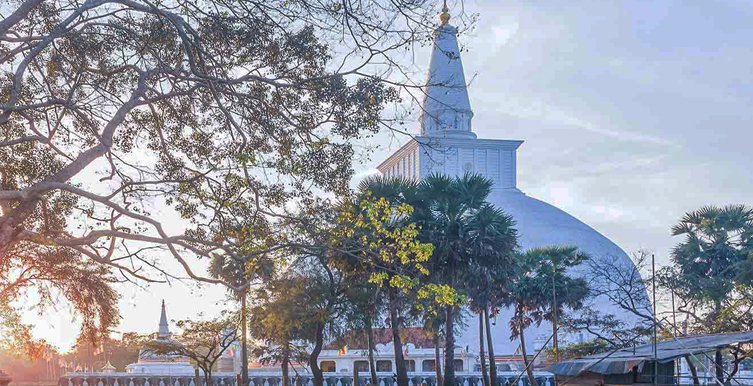
Anuradapura
Anuradhapura, located in the North Central Province of Sri Lanka, is an ancient city steeped in history and spirituality. As one of the oldest continuously inhabited cities in the world, Anuradhapura is a UNESCO World Heritage Site and a pilgrimage destination for Buddhists. The city served as the capital of ancient Sri Lanka for over a millennium and is home to remarkable architectural marvels and sacred sites. The sprawling complex of ancient stupas, dagobas, and monastic ruins, such as the Ruwanwelisaya and the Jetavanaramaya, showcases the grandeur and craftsmanship of the ancient Sinhalese civilization.
Apart from its historical significance, Anuradhapura is a spiritual center where Buddhism thrives. The sacred Bodhi Tree, believed to be a sapling from the original tree under which the Buddha attained enlightenment, stands as a revered symbol of faith. Pilgrims from around the world visit the sacred site to pay homage and meditate under the serene shade of the tree. The city is dotted with numerous temples, offering tranquil spaces for contemplation and spiritual introspection.
Anuradhapura is also known for its intricately carved stone sculptures and ancient irrigation systems. The exquisite moonstones, which are ornately carved stepping stones found at the entrances of ancient buildings, are a testament to the artistic skill and craftsmanship of the time. The remarkable irrigation system, consisting of large reservoirs and canals, exemplifies the advanced engineering capabilities of the ancient Sri Lankan civilization and continues to provide water to the surrounding agricultural lands.
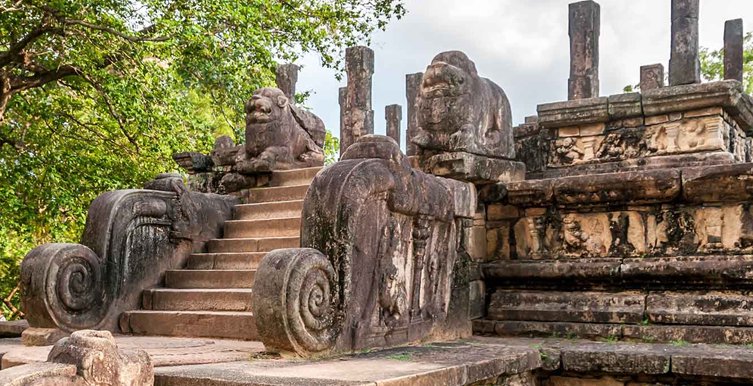
Polonnaruwa
Polonnaruwa, located in the North Central Province of Sri Lanka, is a historical treasure trove and another UNESCO World Heritage Site. The ancient city served as the capital of Sri Lanka from the 11th to the 13th century, during the reign of the Chola and Sinhalese kings. Polonnaruwa showcases a remarkable collection of well-preserved ruins, intricately carved statues, and grand structures that reflect the architectural brilliance and cultural splendor of the past.
The Archaeological Park of Polonnaruwa offers visitors the opportunity to explore the remnants of this once-thriving capital city. The iconic Polonnaruwa Vatadage, a circular relic house, stands as a testament to the craftsmanship of the era and is considered one of the finest examples of ancient Sinhalese architecture. The Gal Vihara, a group of colossal Buddha statues carved out of granite, including the famous standing Buddha statue, is a mesmerizing sight that captures the spiritual essence of the ancient city.
Beyond its historical sites, Polonnaruwa is blessed with natural beauty. The city is surrounded by lush greenery, picturesque lakes, and wildlife-rich habitats. Visitors can embark on a wildlife safari in the nearby Minneriya National Park, known for its large population of elephants and the annual gathering of elephants known as "The Gathering." Exploring the park provides a unique opportunity to observe these magnificent creatures in their natural habitat.
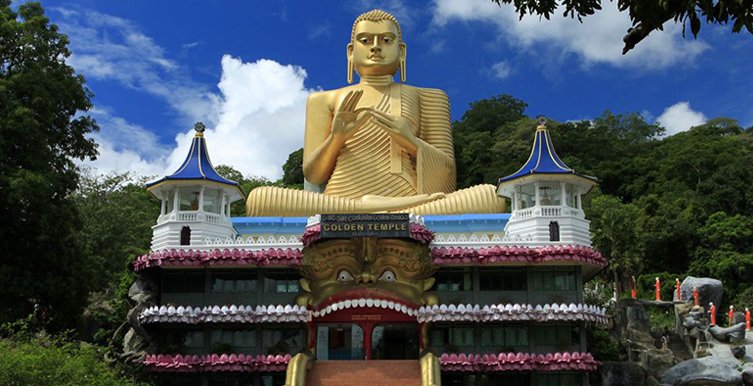
Dambulla
Dambulla, located in the central part of Sri Lanka, is a captivating town renowned for its ancient cave temple complex. The main attraction of Dambulla is the UNESCO World Heritage Site known as the Dambulla Cave Temple, also referred to as the Golden Temple of Dambulla. This impressive complex consists of five caves adorned with intricate Buddhist murals and over 150 statues, making it the largest cave temple in the country. As visitors climb up to the temple, they are greeted by breathtaking views of the surrounding lush greenery.
Beyond the cave temple, Dambulla offers a glimpse into rural Sri Lankan life and natural beauty. The town is surrounded by picturesque landscapes of paddy fields, forests, and mountains, providing a serene setting for travelers seeking tranquility and relaxation. Trekking enthusiasts can explore the nearby Sigiriya Rock, a UNESCO World Heritage Site that features ancient frescoes and panoramic views from the summit.
Dambulla is also known for its vibrant local market, where visitors can immerse themselves in the colors and aromas of fresh produce, spices, and handicrafts. From intricately woven baskets to exotic fruits and vegetables, the market offers a fascinating glimpse into the local culture and way of life. Additionally, the town is a gateway to the Cultural Triangle, a region in Sri Lanka known for its ancient cities, including Anuradhapura and Polonnaruwa, which are easily accessible from Dambulla.

Sigiriya
Sigiriya, often referred to as the "Lion Rock," is an ancient rock fortress and UNESCO World Heritage Site located in the heart of Sri Lanka. Rising dramatically 200 meters above the surrounding lush forests, Sigiriya is famous for its historical and architectural significance. The site served as a royal palace and fortress in the 5th century, featuring intricate frescoes, beautifully landscaped gardens, and a remarkable lion-shaped gateway, though only the giant lion's paws remain today. The panoramic views from the summit are breathtaking, offering a glimpse into the ingenuity of ancient Sri Lankan engineering and design. Sigiriya stands as a testament to the island's rich history and is a must-visit destination for travelers exploring Sri Lanka's cultural heritage.
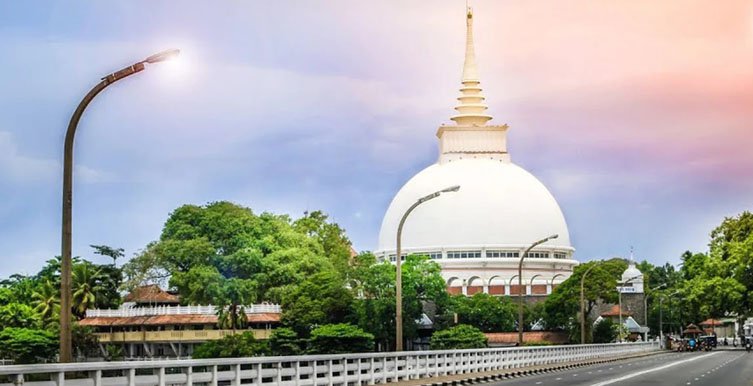
Kaluthara
Kalutara, located on the southwest coast of Sri Lanka, is a charming coastal town known for its serene beaches, rich cultural heritage, and the iconic Kalutara Bodhiya, a sacred Buddhist shrine. The town's palm-fringed coastline offers a tranquil escape for beach lovers and water sports enthusiasts. Kalutara Bodhiya, with its towering white stupa and lush garden surroundings, is a place of spiritual significance and a popular pilgrimage site. Additionally, Kalutara is famous for its intricate handwoven baskets and vibrant basketry industry. Visitors can explore the local markets to witness the skilled artisans at work. With its blend of natural beauty, cultural attractions, and traditional craftsmanship, Kalutara offers a diverse and enriching experience for travelers exploring Sri Lanka's coastal regions./p>
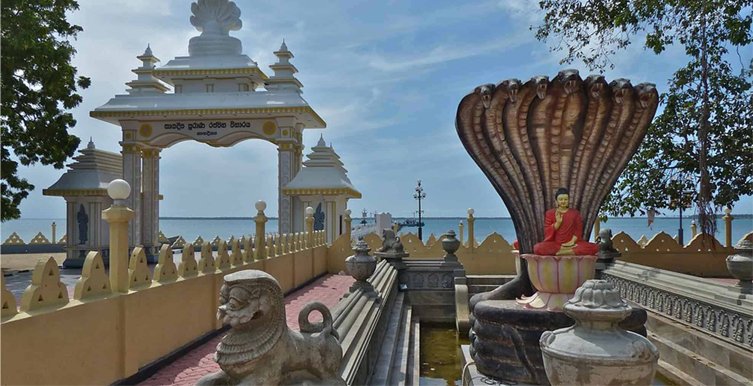
Jaffna Nagapeepaya
Nainativu ( Nagadeepa), is a small but notable island off the coast of Jaffna Peninsula in the Northern Province, Sri Lanka. The name of the island alludes to the folklore inhabitants, the Naga people. It is home to the Hindu shrine of Nagapooshani Amman Temple; one of the prominent 64 Shakti Peethas, and the Buddhist shrine Nagadeepa Purana Viharaya. Historians note the island is mentioned in the ancient Tamil Sangam literature of nearby Tamil Nadu such as Manimekalai where it was mentioned as Manipallavam, and ancient Buddhist legends of Sri Lanka such as Mahavamsa. Ptolemy, a Greek cartographer, describes the islands around the Jaffna peninsula as Nagadiba in the first century CE
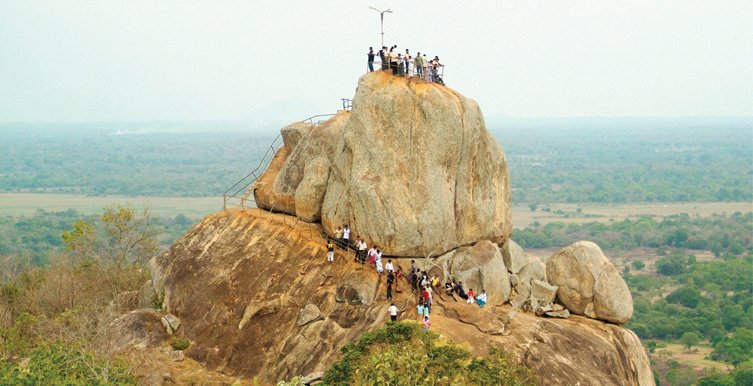
Mihinthalaya
Mihintale is only 12 kM away from the famous Anuradhapura city. The sacred forest mountain Missaka Pabbatha where King Devanampiya Tissa met Arhat Mahinda Thera and his companions is situated in Mihintale. Prior to that the Lord Gautama Buddha had visited this place on his Third visit which was called as Missaka Pabbatha then. Being one of the sixteen places (Solosmasthana) the Lord Buddha had visited in Sri Lanka, this is regarded as one of the most important sacred places by the Buddhists in Sri Lanka.The area of Mihintale surrounds with a jungle and there are rock boulders scattered around the mountainous area. There are many caves which were earlier used by monks for meditation in a quite surrounding away from the main city of Anuradhapura. There is abundance of ancient stone architecture surrounding the many Stupas, monastic complexes and other sacred places.